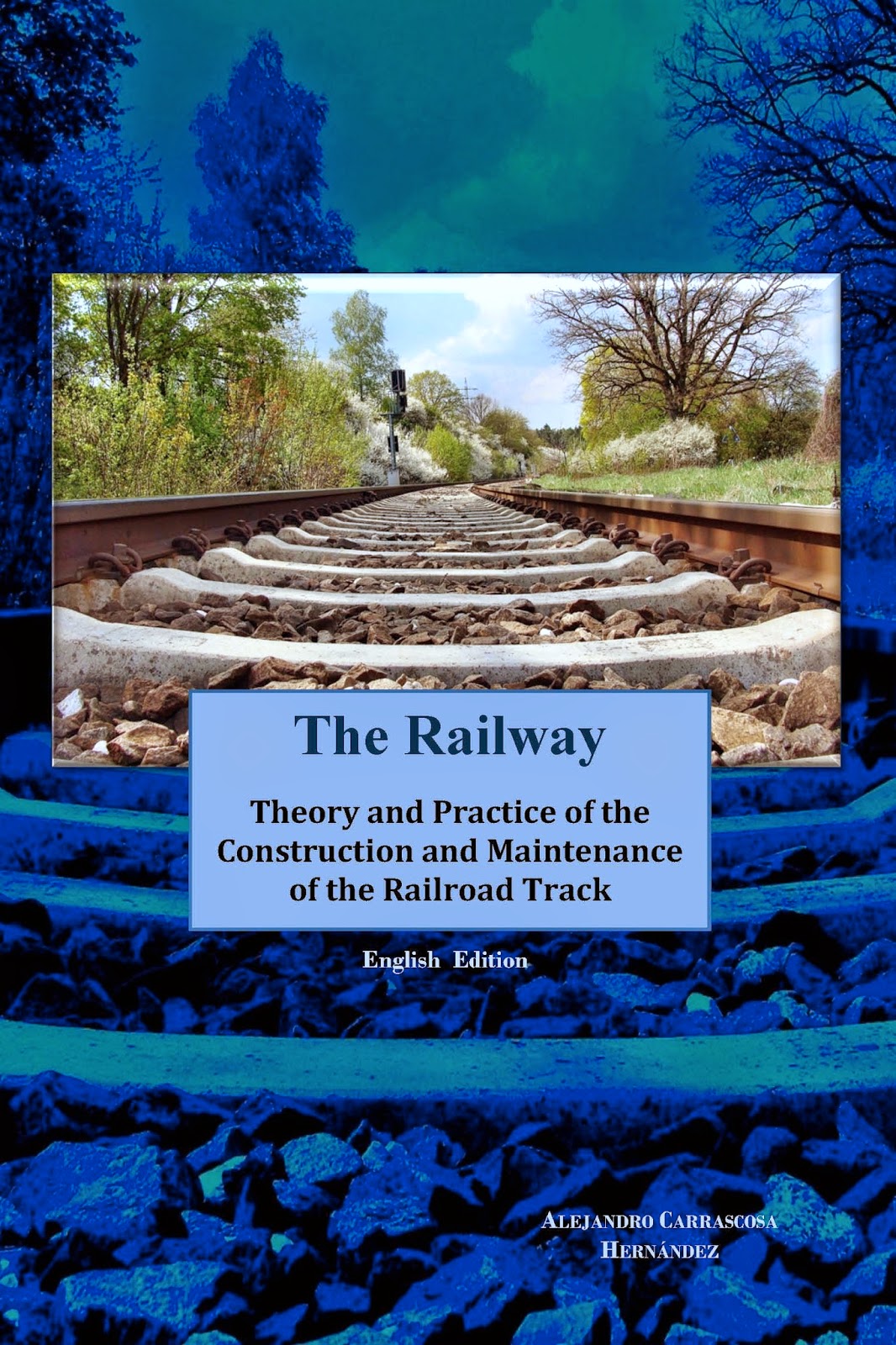We already viewed in the chapter covering the camber that there is a
“Minimum Radius”, which must be considered for the design of the railway path:
Rmin=(s*(Vmax) 2)/((Hmax+I)*127)
When the railways started to be built, and since their maximum speed did
not exceed the 30 km/h, there was no need of cambering the curves.
Straight-lines and circular curves were joined to each other directly:

As the speed went increasing, it became necessary to provide cambers to the
curves, and despite it was started forming the necessary ramps in the
straight-sections, soon it was decided to introduce intermediate curves of
variable and progressive curvature (1/r).
Curve configuration
These curves are called “transition curves”, and the original curve was
replaced by three curve alignments:
Entry transition, Circular and Exist transition.
During several years the curve type “cubic parabola” was used as transition
curve, with a curvature varying in relation to its development, as far as its
length is not too large.
Soon it was adopted the Clothoid as transition curve, mainly due to the linear variation of its curvature with regard to the curve length.
When using Clothoids in a circular path, if we keep the radius it becomes
necessary to move the center, increasing at the same time the length of the
curve in a level equal to the semi-addition of the 2 transitions.
If we compare the primitive curve
with the resulting curve once we have intercalated a clohoid, the necessary
displacement in the zone where the primitive curve was tangent to the straight
line is:
DR=L2 /(24 x R)
So far, we will use this datum, and in further chapters we will extend the
information about the clothoid and its main formulae.
Full themes in the book -In paper and ebook (Follow the link)
--------------------------------------------------
Trazado en Planta
Ya vimos en el capítulo del peralte que existe un “Radio mínimo” , y hay que tenerlo en cuenta para confeccionar el trazado.
Rmin = ( s x ( Vmax ) 2 ) / (( Hmax + I ) x 127)
Cuando se comenzaron a construir ferrocarriles, y como su velocidad máxima no superaba los 30 km/h, no se precisaba el peralte y las rectas y las curvas circulares se unían entre sí directamente.
Según se fue incrementando la velocidad , se sintió la necesidad de peraltar las curvas, y aunque se comenzó formando la rampa de peralte en las rectas, se vio que era necesario enlazar las alineaciones curvas con otras intermedias de curvatura (1/r) variable y progresiva.
A estas curvas se les llama curvas de transición y la curva circular primitiva fue sustituida por tres alineaciones curvas :
- Transición de entrada
- Curva circular
- Transición de salida
Durante muchos años se utilizó como curva de transición la “parábola cúbica”, cuya curvatura muy aproximadamente varía en relación con su desarrollo, siempre que su longitud no sea muy grande.
Después se adopto como curva de transición universal “La Clotoide”, por variar linealmente su curvatura con la longitud de la curva.
En la implantación de “Clotoides” en el trazado de una circular, manteniendo el radio se hace preciso desplazar la ubicación de su centro, a la vez que se alarga el desarrollo total en una magnitud igual a la semisuma de las 2 transiciones
Si comparamos la curva primitiva con la resultante una vez haber intercalado un clotoide, el retranqueo necesario en la zona en que la curva primitiva era tangente a la recta es:
DR=L2 /(24 x R)
Por ahora, vamos a quedarnos con este dato, en otro capítulo ampliaremos los conocimientos sobre la clotoide y sus fórmulas fundamentales.
Temas completos en el libro - en papel y ebook -(Siga este enlace)




.png)

No hay comentarios:
Publicar un comentario